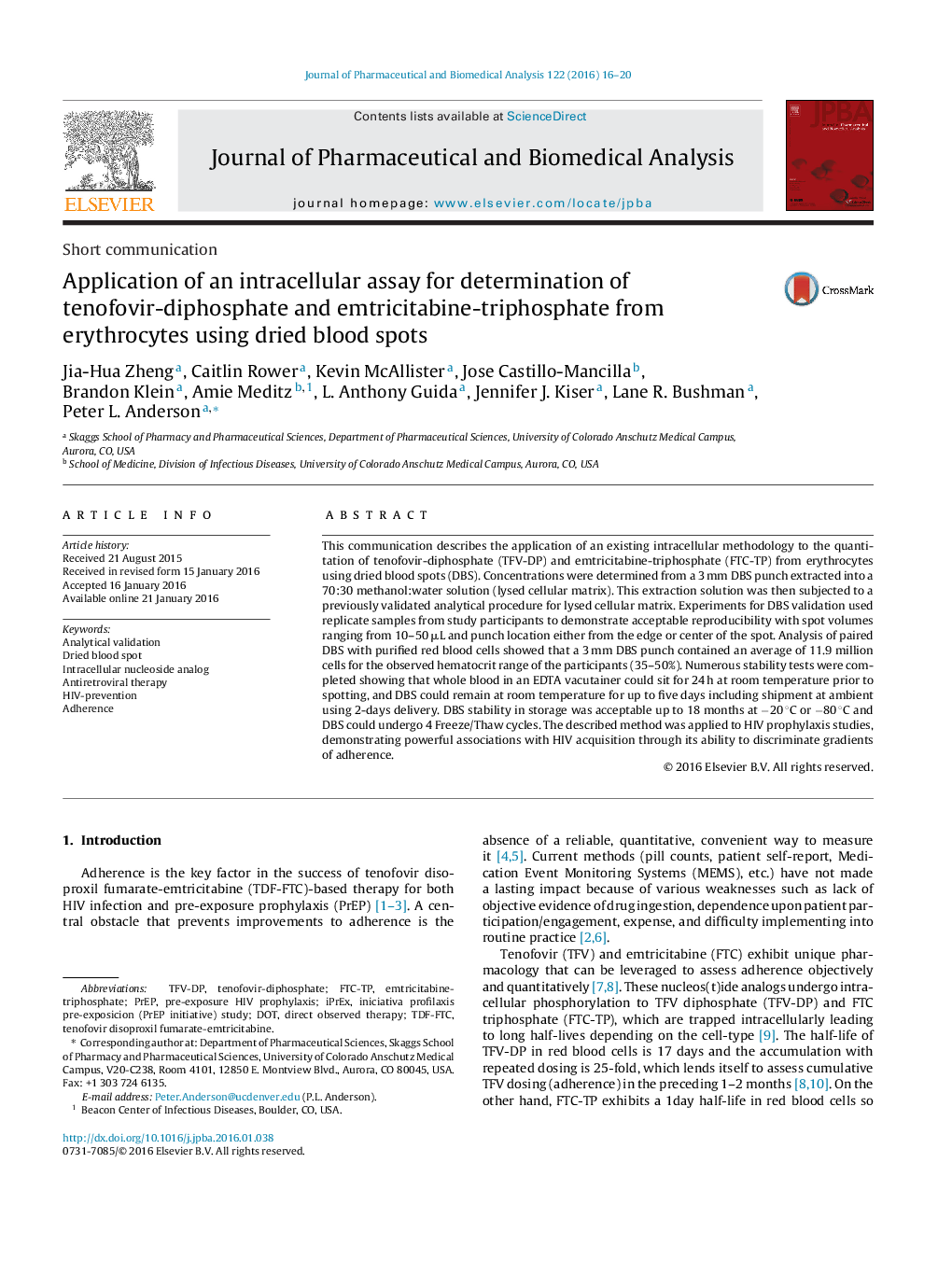| کد مقاله | کد نشریه | سال انتشار | مقاله انگلیسی | نسخه تمام متن |
|---|---|---|---|---|
| 1220424 | 1494613 | 2016 | 5 صفحه PDF | دانلود رایگان |

• Validation for TFV-DP and FTC-TP in erythrocytes using dried blood spots (DBS).
• Precise extraction demonstrated using replicate clinical samples.
• Analyte stability over 1 year at −20 °C to −80 °C and up to 5 days at ambient.
• Measurement not impacted by punch location, spot volumes, and hematocrit range tested.
• The method has been implemented as a biomarker of adherence to TDF-FTC therapy
This communication describes the application of an existing intracellular methodology to the quantitation of tenofovir-diphosphate (TFV-DP) and emtricitabine-triphosphate (FTC-TP) from erythrocytes using dried blood spots (DBS). Concentrations were determined from a 3 mm DBS punch extracted into a 70:30 methanol:water solution (lysed cellular matrix). This extraction solution was then subjected to a previously validated analytical procedure for lysed cellular matrix. Experiments for DBS validation used replicate samples from study participants to demonstrate acceptable reproducibility with spot volumes ranging from 10–50 μL and punch location either from the edge or center of the spot. Analysis of paired DBS with purified red blood cells showed that a 3 mm DBS punch contained an average of 11.9 million cells for the observed hematocrit range of the participants (35–50%). Numerous stability tests were completed showing that whole blood in an EDTA vacutainer could sit for 24 h at room temperature prior to spotting, and DBS could remain at room temperature for up to five days including shipment at ambient using 2-days delivery. DBS stability in storage was acceptable up to 18 months at −20 °C or −80 °C and DBS could undergo 4 Freeze/Thaw cycles. The described method was applied to HIV prophylaxis studies, demonstrating powerful associations with HIV acquisition through its ability to discriminate gradients of adherence.
Figure optionsDownload as PowerPoint slide
Journal: Journal of Pharmaceutical and Biomedical Analysis - Volume 122, 15 April 2016, Pages 16–20